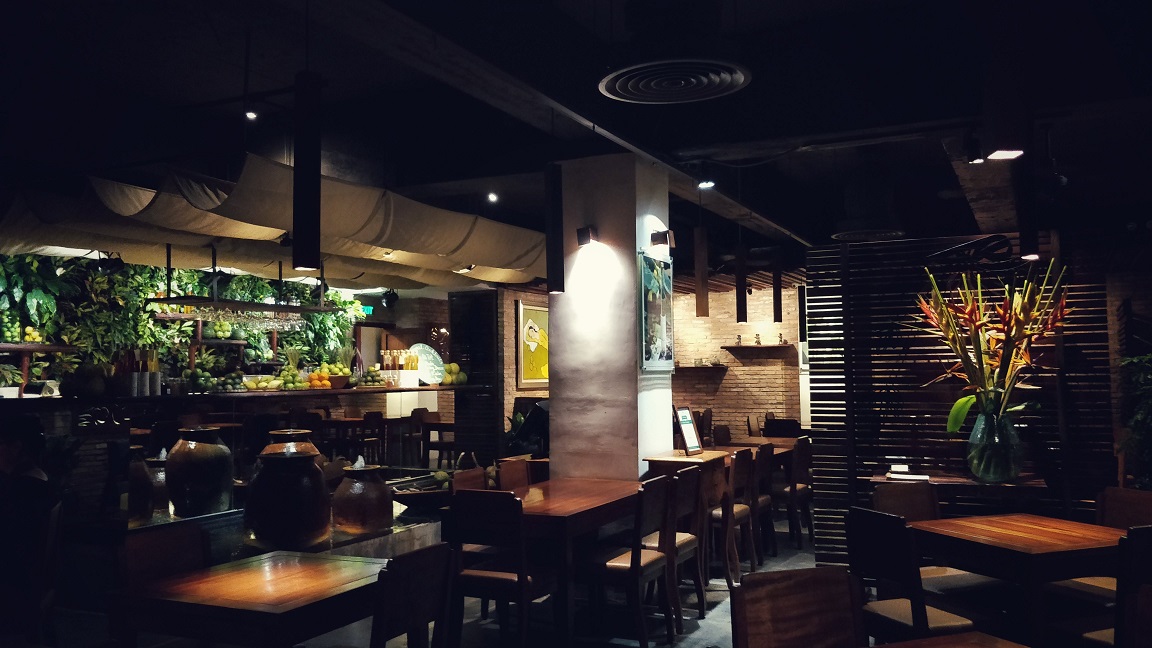Pan Asian Restaurant Islamabad: Discover Exquisite Asian Food
Pan Asian Restaurant Islamabad: Discover Exquisite Asian Food
Blog Article
Savor Genuine Asian Food With a Pan-Asian Spin for a Cooking Experience
Beginning on a culinary trip with authentic Oriental food, boosted with a Pan-Asian spin, offers an one-of-a-kind chance to discover the rich tapestry of flavors that define the region's diverse culinary traditions. As you ponder these enticing dishes, take into consideration the social narratives and historical impacts that shape them, each bite supplying a story waiting to be found. best asian restaurant Islamabad.

Exploring Pan-Asian Flavors
In the realm of international gastronomy, Pan-Asian food stands apart for its remarkable variety and the unified interaction of flavors from different Asian societies. This culinary strategy commemorates the distinct active ingredients and rich customs found throughout the continent, producing a tapestry of preferences that is both rewarding and fascinating. Secret to Pan-Asian food is its ability to stabilize different flavors-- pleasant, salty, spicy, and sour-- while highlighting the freshness and quality of each active ingredient.
From the umami-rich soy sauce of Japan to the fiery chili peppers of Thailand, Pan-Asian cuisine supplies a substantial palette of flavors. These aspects are often combined in inventive ways, enhancing dishes with layers of intricacy. As an example, making use of aromatic natural herbs such as lemongrass and cilantro, typical in Vietnamese and Thai food, includes a refreshing brightness to recipes, while the consolidation of coconut milk provides a velvety, abundant appearance.
The emphasis on fresh produce and aromatic spices makes certain that each meal is not just a banquet for the palate however likewise for the senses. Pan-Asian cuisine welcomes restaurants to get started on a cooking trip, exploring the vast and varied landscapes of Asian gastronomy with every bite.
Blend Dishes to Try
While Pan-Asian food is celebrated for its standard flavors, the modern cooking landscape is significantly welcoming blend meals that mix these classic components with influences from various other areas. This ingenious technique not just honors the rich heritage of Eastern culinary arts however additionally introduces unique preference experiences that interest contemporary palates.
An archetype of such a fusion recipe is the Korean-Mexican taco, where marinaded bulgogi beef is covered in a warm tortilla, topped with kimchi and a zesty gochujang-infused salsa. This mix marries the vibrant, mouthwatering tastes of Korea with the lively, fresh components of Mexican cuisine. Likewise, sushi burritos have gained popularity, integrating the fragile artistry of Japanese sushi with the passionate, hand-held benefit of a burrito, usually featuring fusion components like tempura shrimp and avocado with a drizzle of wasabi mayo.
Another notable meal is Thai curry ramen, which infuses the creamy, aromatic flavors of Thai curry into the soothing broth of typical Japanese ramen, creating an unified mix that tantalizes the detects. These blend dishes prolong past simple uniqueness; they represent a culinary dialogue between cultures, urging exploration and development in the globe of Pan-Asian food.
Essential Ingredients and Flavors
To truly value Pan-Asian food, one must recognize the necessary components and flavors that create its foundation. This diverse cooking design draws from a rich tapestry of Eastern traditions, utilizing a harmonious mix of structures and flavors.
Aromatic components are essential, with ginger, lemongrass, and garlic being common across numerous Pan-Asian recipes. These active ingredients offer a fragrant base that improves the intricacy of tastes. Spices such as celebrity anise, cardamom, and cinnamon introduce heat and personality, resembling impacts from regions like China and India.

Food Preparation Strategies and Tips
Mastering the art of Pan-Asian cuisine calls for familiarity with its unique cooking techniques, each adding to the dynamic tapestry of flavors this cooking practice is celebrated for. Central to these approaches is the stir-fry, a quick food preparation technique that maintains the nutritional integrity and brilliant shades of active ingredients. Making use of a frying pan, the stir-fry method enables even warmth distribution, necessary for attaining the particular appearance and taste balance of Pan-Asian meals.
An additional basic technique is steaming, specifically widespread in Chinese food. This mild approach maintains the all-natural flavors and nutrients of active ingredients, making it excellent for fish and shellfish and vegetables. Dumplings, a cherished staple, typically take advantage of steaming, causing soft, succulent structures.
Grilling, additionally essential, gives smoky depths to meals such as Oriental bulgogi or Japanese yakitori (asian restaurant isb). This technique frequently involves marinating components, allowing flavors to pass through deeply prior to cooking over an open flame or warmer
Lastly, grasping the art panda house of balancing tastes-- sweet, sour, salty, bitter, and umami-- is important. Appropriately layering these aspects can elevate a dish from average to phenomenal, supplying a complicated and pleasing culinary experience that symbolizes the essence of Pan-Asian food.
Dining Experiences Worldwide
Throughout the globe, Pan-Asian food uses an unrivaled eating experience, celebrated for its rich tapestry of tastes and lively presentations. This culinary phenomenon has actually Visit Your URL transcended social boundaries, recording the hearts and palates of food enthusiasts worldwide. In cosmopolitan cities like New York, London, and Sydney, Pan-Asian restaurants act as melting pots where cooking traditions from Thailand, Japan, China, and beyond assemble, offering restaurants with a diverse mix of meals that highlight the area's diversity.
The worldwide charm of Pan-Asian food hinges on its capability to provide both authenticity and innovation. Chefs skillfully marry traditional components such as lemongrass, soy sauce, and miso with contemporary methods, leading to meals that are both refreshingly new and familiar. This combination permits restaurants to get started on a cooking trip that values heritage while embracing modernity.
Additionally, eating experiences are raised with attentively designed environments that mirror the principles of Pan-Asian visual appeals. From minimal Japanese-inspired insides to lively Thai-themed spaces, each restaurant uses an unique ambiance that enhances the cooking offerings. Because of this, customers are not simply eating a meal yet partaking in a cultural experience, making Pan-Asian eating a truly worldwide sensation.
Conclusion
The exploration of Pan-Asian food supplies a profound understanding of the complex interplay of tastes and cooking traditions throughout Asia. By accepting have a peek at these guys fusion dishes such as Thai curry ramen and sushi burritos, the culinary journey not just highlights the versatility of standard ingredients however likewise showcases innovative modern-day methods. This gastronomic adventure, enriched by cooking approaches and vital seasonings, supplies a distinct possibility to appreciate the cultural variety and cooking artistry that specify Pan-Asian food on a worldwide range.
Embarking on a culinary trip via genuine Asian cuisine, enhanced with a Pan-Asian twist, offers an one-of-a-kind chance to discover the rich tapestry of tastes that define the area's varied culinary customs.In the realm of international gastronomy, Pan-Asian cuisine stands out for its impressive diversity and the unified interaction of flavors from numerous Oriental cultures. Key to Pan-Asian cuisine is its ability to balance different flavors-- pleasant, salty, spicy, and sour-- while highlighting the freshness and top quality of each component.

Report this page